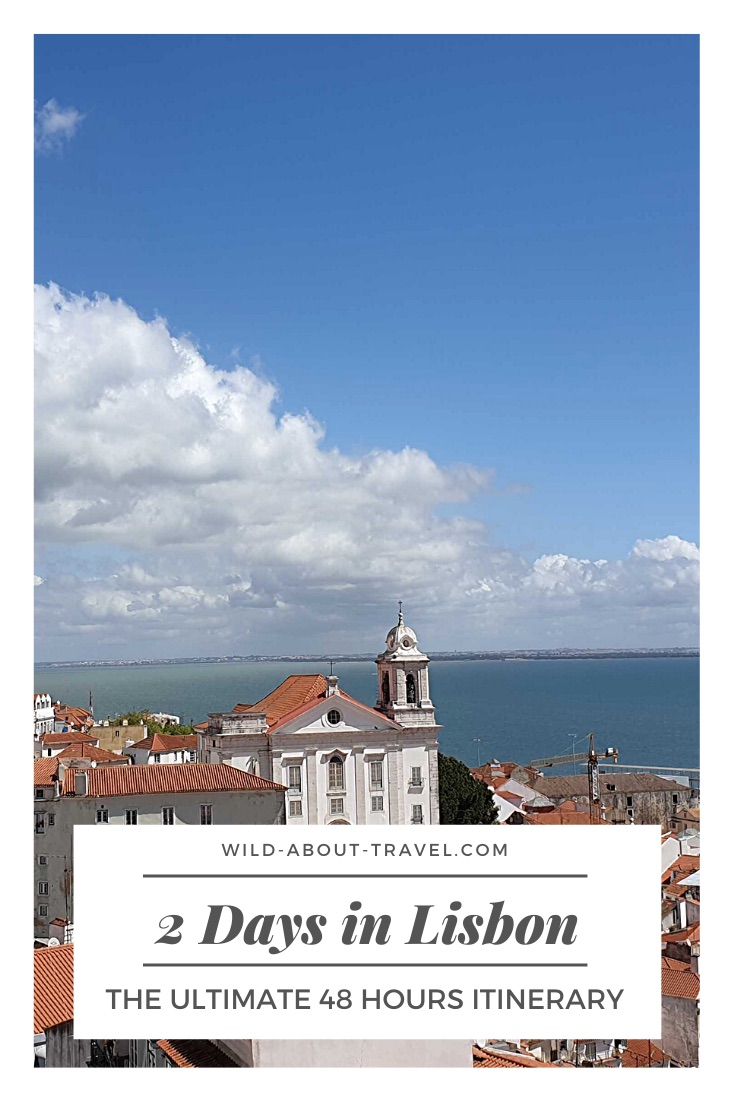Are you planning to spend 2 days in Lisbon and wondering how to get the most out of your trip? Read about my Lisbon itinerary and find out how to see the best of Lisbon in 2 days.
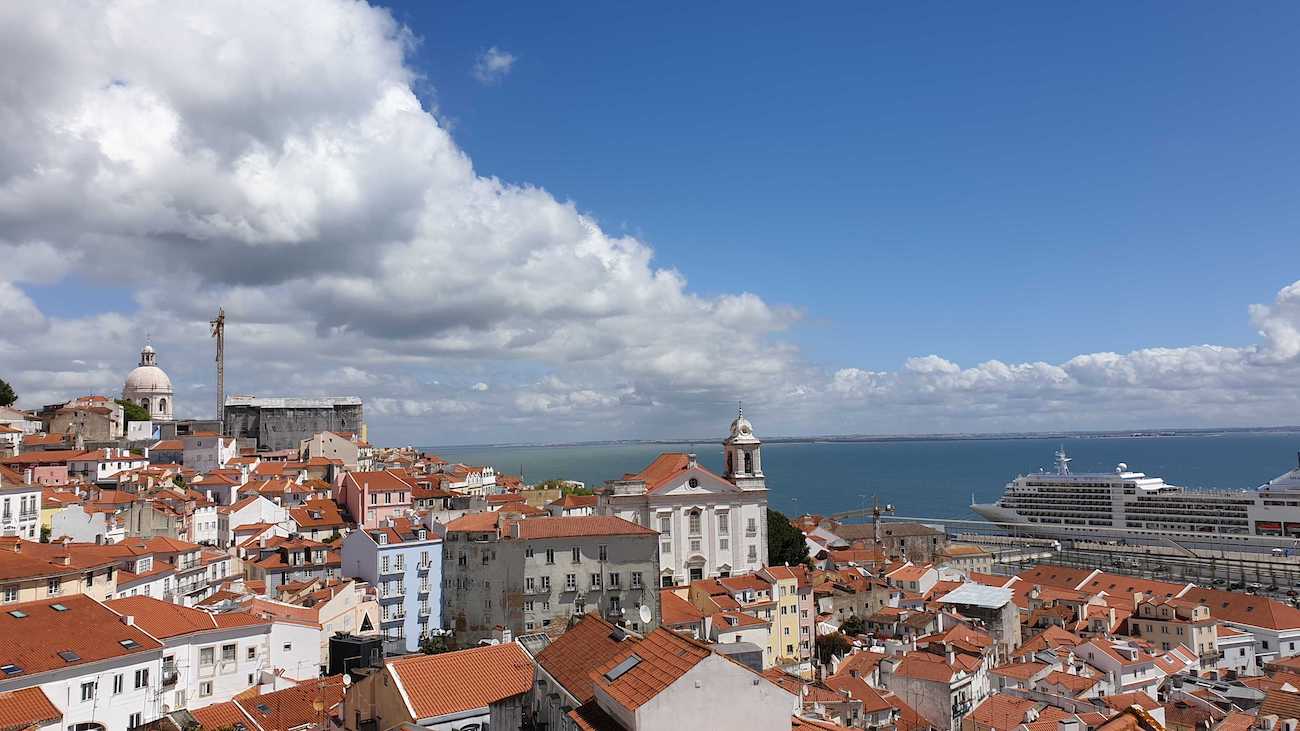
Lisbon was one of the best discoveries of my recent trips. So much so that I wish I had visited the city a few years earlier before it became such a top destination in Europe. I fell in love with Lisbon’s bohemian and slightly decadent atmosphere and was impressed by how lively and creative the city is. I loved every moment of my 10-day trip to Portugal, and Lisbon certainly was one of the highlights. Retrospectively, starting my trip from Porto was a good idea. I liked the city so much, and I was not expecting to be even more amazed by Lisbon.
Lisbon history in a nutshell
Portugal’s capital is one of the oldest cities in Western Europe, with a history dating back a few centuries before the Roman Empire. Subsequent invasions from the Romans, Germanic Visigoths, and Moors from Northern Africa left their imprint on the city’s cultural development.

The 15th and 16th centuries marked Lisbon’s golden age. Lisbon was at the forefront of maritime explorations thanks to its privileged geographic position at the mouth of the River Tagus and overlooking the Atlantic Ocean. The Portuguese discoveries included West Africa, the Cape of Good Hope in South Africa, the Indian Ocean, India, Southeast Asia, and Brazil. You can still see the wealth and power of Lisbon when visiting Belem and its two most famous landmarks: the Belem Tower and the Jeronimos Monastery, which was inscribed as a UNESCO World Heritage Site back in 1983.
The 1755 earthquake and its widespread destruction were one of the darkest moments in the history of Lisbon. The rebuilding is clearly visible in the Baixa district, with the ample, symmetric Praça do Comércio and the elegant buildings lining the streets built as a grid.
As for the origins of Lisbon’s name, the most credited answer is that it might derive from the ancient name “Allis Ubbo,” the Phoenician name meaning “safe harbor.”
Best time to visit Lisbon
Lisbon is a year-round destination, although the best time to visit is undoubtedly late Spring or early Autumn. Like Barcelona, Venice, and Amsterdam, Lisbon is one of the most visited cities in Europe. This means that it can get very crowded in the summer (June, July, and August) or during the holidays (Easter, for example). And also more expensive. Winters are generally mild but can be somewhat rainy. If possible, when planning your trip to Lisbon, try to visit during the weekdays since Lisbon is a hot weekend getaway in Europe.
If you can only spend two days in Lisbon during the peak season, I advise you to buy Skip the Line tickets for the main attractions. That way, you’ll avoid wasting time queueing.
TIP
LISBON CARD
The best way to get around Lisbon (aside from walking) is to buy the Lisboa Card, which is really convenient. You can choose between a 24h, 48h, or 72h Lisbon Card to get unlimited access to all public transportation. Furthermore, the Lisboa Card provides additional benefits, like a free pass to 35 museums and monuments, plus discounts on other places of interest and activities.
You can buy the Lisboa Card once you get there at the Ask Me Tourist Offices and Turismo de Lisboa facilities and shops. However, if you want to save time and start using public transport right away, I suggest you buy your Lisboa Card in advance and redeem it at the Airport.
Lisbon attractions map
Lisbon itinerary: Day 1
Like I always do, on the first day, I focused on Lisbon’s historical center to explore the city’s heart.
You can, of course, discover Lisbon by yourself and at your own pace. However, if you want to learn more about the capital of Portugal, its history, and other curiosities, a guided tour is a good introduction. Here are a few Lisbon tours which are worth looking at:
- Lisbon Essential Tour: History, Stories & Lifestyle
- Best of Lisbon: 3-Hour Private Walking Tour
You can also explore the city differently and take advantage of cool experiences like the Half-Day Electric Bike Tour or the Lisbon Sightseeing Tour by Tuk Tuk. The latter might be a good idea if you spend 2 days in Lisbon with kids since climbing the hills is tiring.
A tour provides a great introduction to the best of Lisbon, but if you prefer to do everything independently, here’s my suggested Lisbon itinerary on your first day.
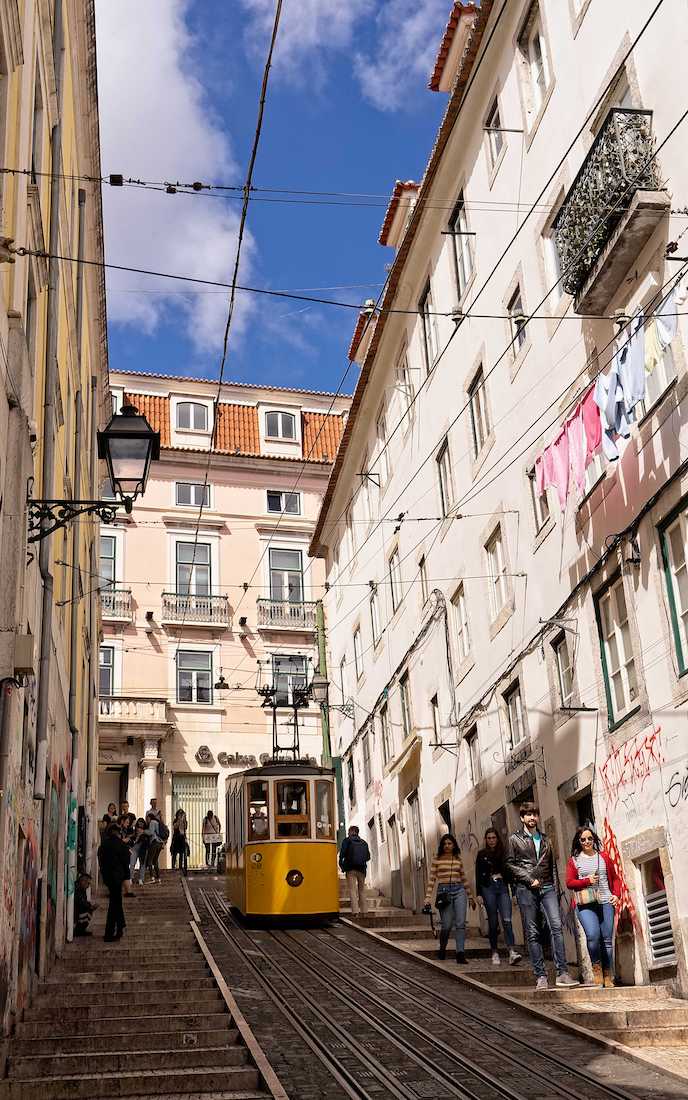
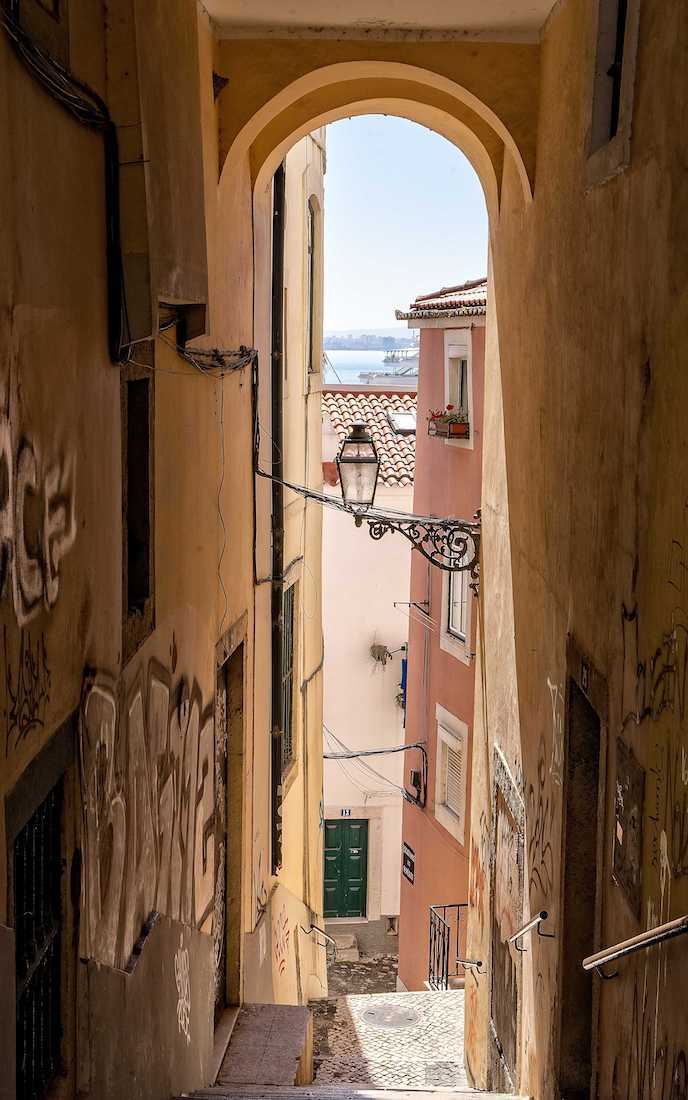
Rossio Square
The majestic Rossio Square is a convenient place to start your visit, regardless of where you are. Praça do Rossio is indeed an ideal spot to orient yourself and begin appreciating the decadent look that makes Lisbon so unique.
From Rossio Square, you can choose whether to take your first Lisbon funicular or walk and reach the beautiful garden of São Pedro de Alcantara. If you decide to ride the Funicular da Glória, expect it to be very crowded. Glória funicular dates back to 1885 and climbs up to São Pedro de Alcântara (Bairro Alto) from Praça dos Restauradores in the Baixa. It’s often jam-packed with tourists and locals, the latter heading to the bars of Barrio Alto during weekends.
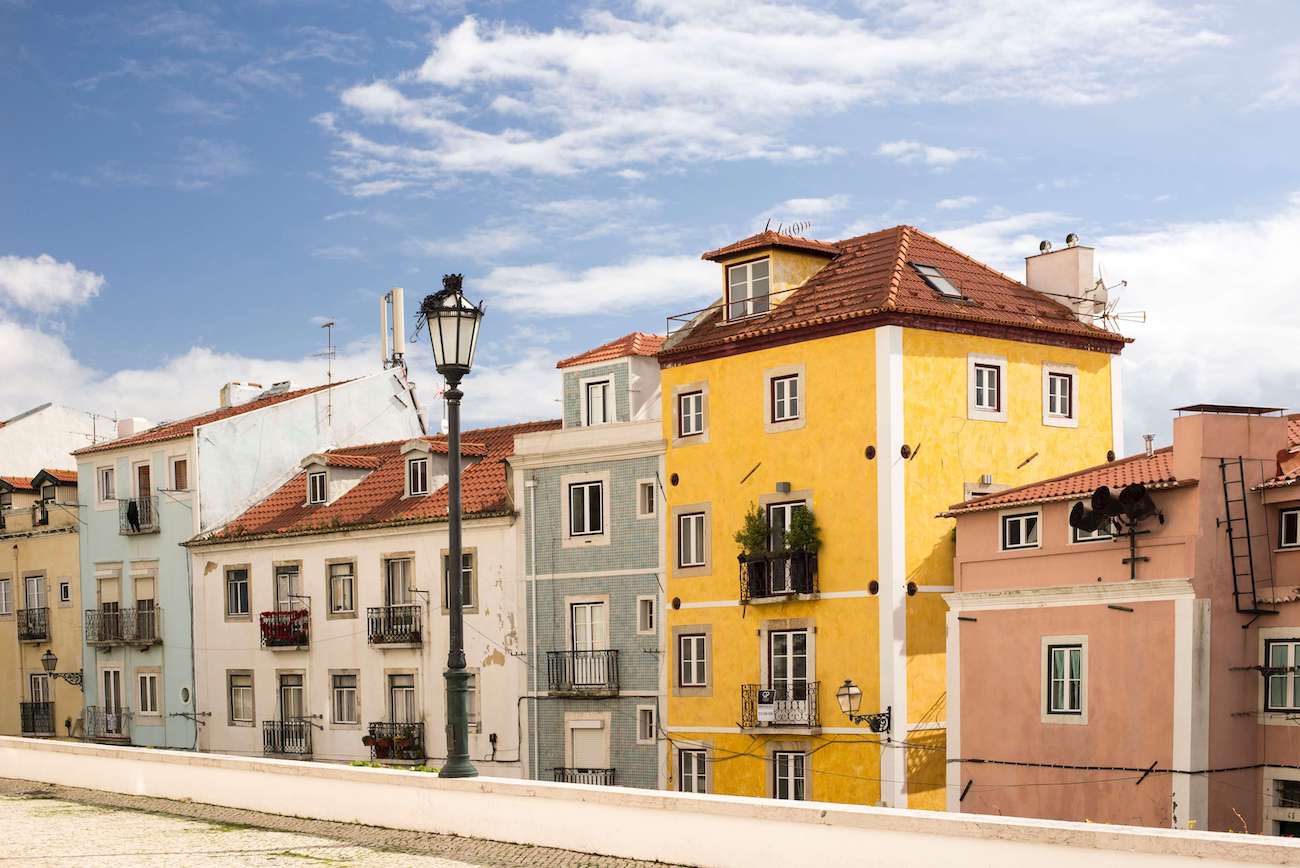
São Pedro de Alcântara is one of the many viewpoints (Miradouros), offering beautiful sights of the Baixa and St George’s Castle hill. Also, São Pedro de Alcântara is considered one of the most beautiful places to admire the city at sunset.
Santa Justa elevator and Convent of Carmo
The Santa Justa elevator is only a short distance from Praça Rossio. Built in 1902 by Raoul de Mesnier du Ponsard, a French architect and an apprentice of Gustave Eiffel, the Santa Justa elevator (also called “Elevator of Carmo”) is one of Lisbon’s landmarks. The elevator connects the lower part of the city to the Bairro Alto, and if you climb the spiral staircase to the top of the tower, you’ll be rewarded with a stunning view of the city.
Nearby the Santa Justa elevator, the Carmo convent (Convento do Carmo) is worth a visit. The medieval convent was partially ruined during the 1755 Lisbon earthquake, and today you can see a portion of its original architecture: the fascinating roofless nave. You can also have a look at the small archaeological museum, which includes artifacts from different periods.
Praça do Comércio
Once known as Terreiro do Paço (the Palace’s Square), given its proximity to the Royal Palace, Praça do Comércio is a beautiful square surrounded by elegant yellow buildings and arcades. The 1755 earthquake destruction didn’t spare the Royal Palace. After the erection of the new buildings, the new square became Lisbon’s port of entry; thus, the name Praça do Comércio.

The statue of King José I on horseback towers at the center of the square, one of the main meeting points in the city. Don’t miss to pop into the Martinho da Arcada cafe. Dating back to 1782, it was one of the favorite places of Fernando Pessoa and other Portuguese poets and writers.
Alfama
From Praça do Comércio, head east to the quaint Alfama district, the most typical quarter in all of Lisbon. With its alleys perching up the steep hills, Alfama is one of the few neighborhoods that survived the 1755 earthquake. It was also one of my favorite places – probably the best areas in Lisbon, IMO. And I felt so happy to have booked my accommodation in Lisbon right there.
Walking through Alfama is like taking a step back in time. The district has a strong Moorish influence, starting from its name, deriving from the Arabic word “al-hamma,” which means hot springs or baths. The Moors built the maze of winding, narrow streets as a defense system and to keep homes cool in summer. Alfama exudes an old-world atmosphere, and the worn whitewashed houses covered in colorful tiles reflect the fado’s melancholy and longing.
Although the increase in tourism fatally changed the city, as I got lost through the charming alleys of the Alfama, I could still breathe the soul of Lisbon. The Alfama district retained an air of authenticity, which sadly might soon disappear as gentrification holds foot.
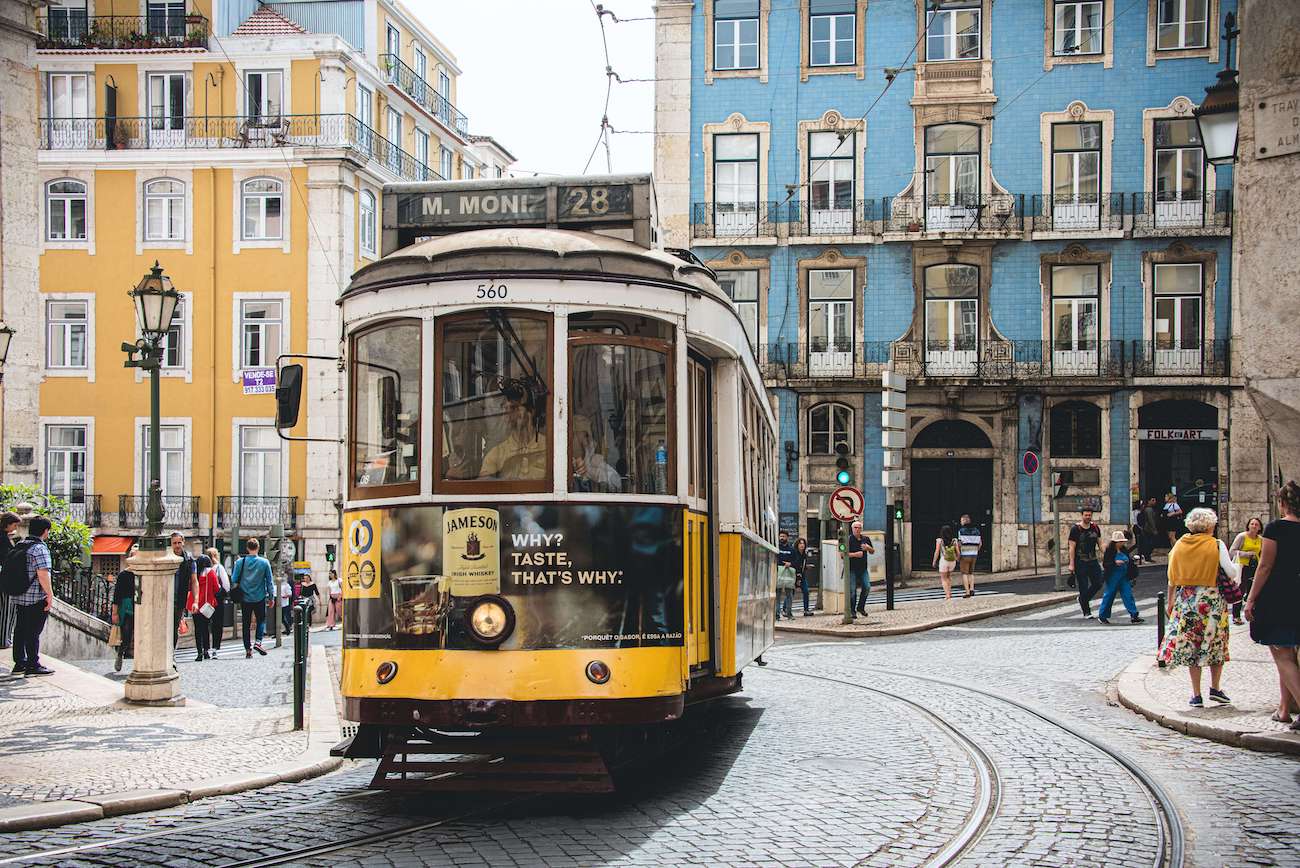
This is also the perfect place to board one of Lisbon’s iconic trams, such as the number 28. Onboard, you can see how narrow the streets of Alfama are while the tram makes its way through the meandering uphill alleys.
Lisbon Tram 28
Lisbon Tram 28 is by far one of the most famous attractions in the city. Therefore, the queues are long, and sometimes you have to wait for 2 or 3 vehicles to pass before you can board. Is Tram 28 worth the wait? I can’t tell. I dislike queuing so much that I’m ready to do so only to experience something exceptional. Rather than waiting and boarding a crammed tram (not exactly my idea of something enjoyable), I prefer walking peacefully.
Aside from leisurely strolling around and watching local life unfolding before your eyes, Alfama is also home to some of Lisbon’s main landmarks.
Lisbon Cathedral
The Cathedral is Lisbon’s oldest building, erected in 1150 on the site of an old Mosque. Don’t feel put off by the bulky external architecture. Once you step inside, you’ll marvel at the beautiful Romanesque and Gothic interior structure. A must is visiting the gothic cloisters, which are beautiful and exude spirituality.
Saint George’s Castle
You’ll know you’re approaching Saint George’s Castle as soon you spot the crowds. Although severely damaged during Lisbon’s 18th-century earthquake, the castle underwent a significant refurbishment in the second half of the 20th century. Saint George’s Castle is indeed one of Lisbon’s top attractions, especially for the superb views of the city from the ramparts and the towers. A Skip the Line ticket is the best way to optimize your time in Lisbon, avoiding the frequent long queues.
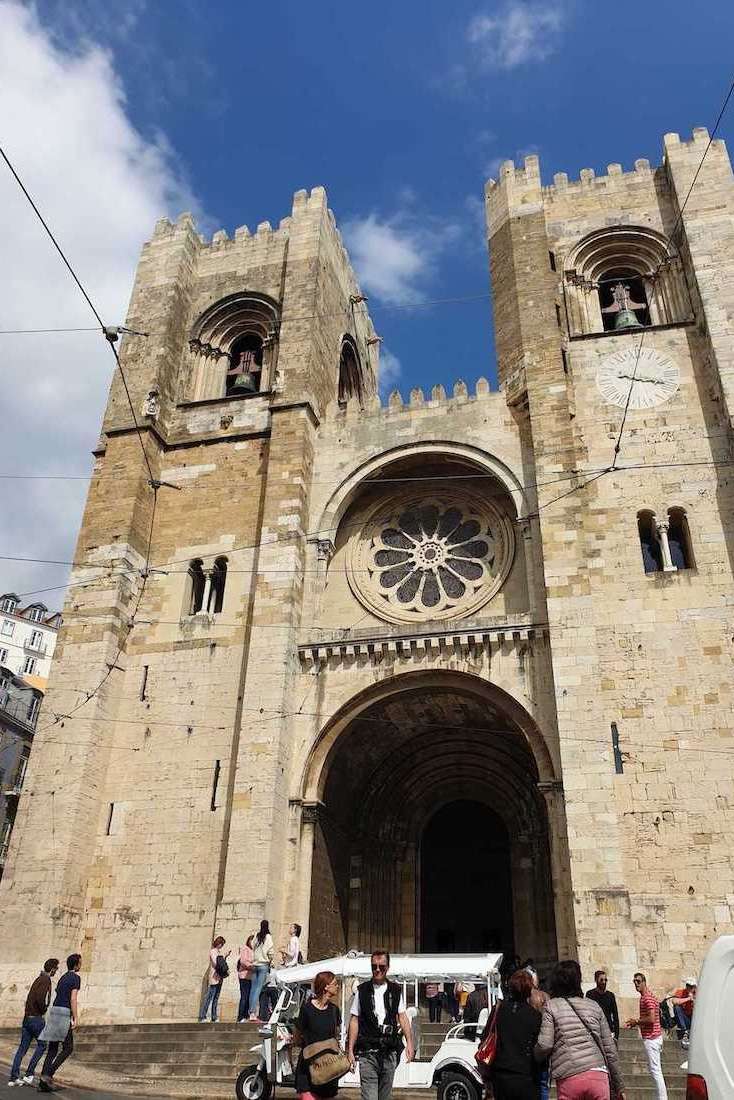
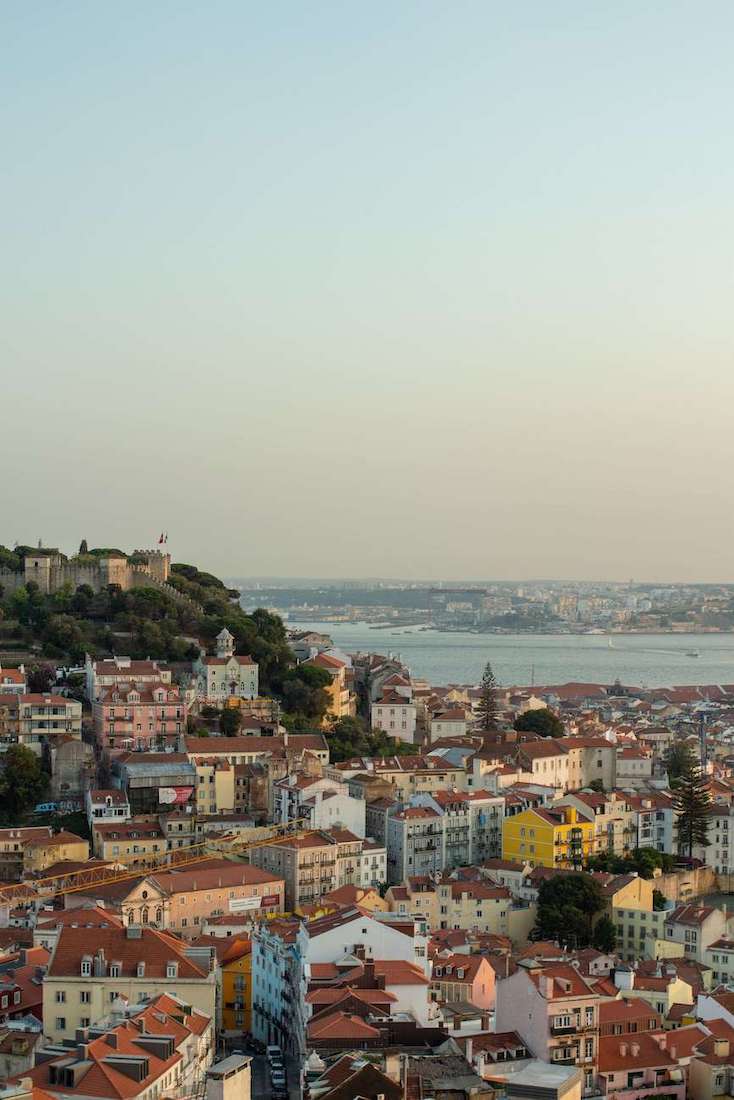
Best viewpoints in Lisbon
Like Rome, Lisbon is a hilly city; therefore, there are many terraces and panoramic points. Every Miradouro offers a different point of view, and it’s hard to tell which one is better.
The Alfama district is also home to beautiful terraces from where you get amazing panoramic views of Lisbon. Miradouro das Portas do Sol overlooks the Alfama’s red-tiled rooftops, domes, and church belltowers. From the Miradouro de Santa Luzia, you’ll get to admire the Tagus river and the picturesque houses. Miradouro da Graça provides lovely sights of the Castle, the river, and central Lisbon and is one of the favorite spots of sunset chasers. Another beautiful terrace is the nearby Miradouro da Nossa Senhora do Monte, the highest point in Lisbon and a great location at twilight.
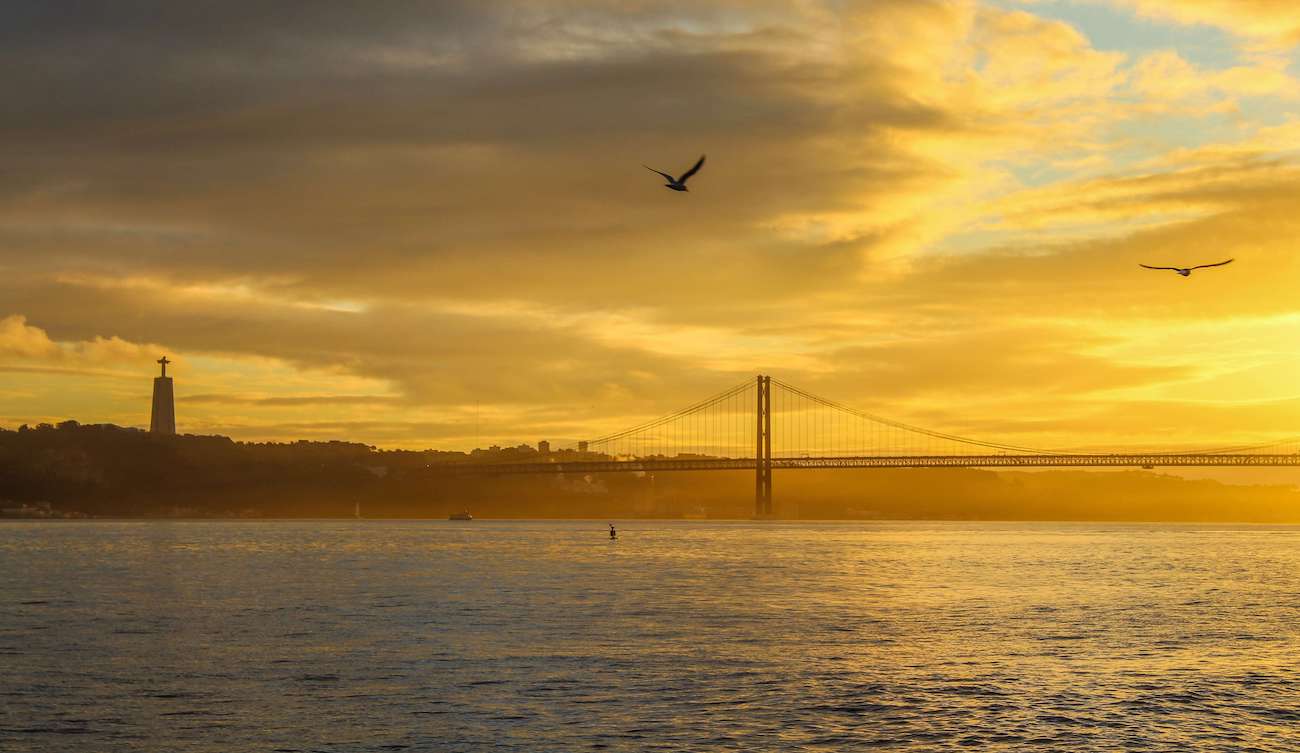
Lisbon itinerary: Day 2
My suggestion to discover the best of Lisbon in 2 days leads you to the Belém district, where you can easily spend a few hours.
Belém
In Belém, you’ll get up and close with Portugal’s glorious past and the legendary Portuguese explorations. Many famous explorers embarked from Belém on their discovery expeditions. Bartholomeu Dias reached and rounded the Cape of Good Hope, while Vasco da Gama discovered the sea route to India.
It was a time of prosperity, leading to the construction of magnificent monuments like the Jeronimos Monastery, one of Europe’s many beautiful UNESCO World Heritage Sites.
In the morning, board tram number 15 from Baixa and observe the city as you head towards Belém. Once you get off the tram, the first landmark you’ll reach is the Jeronimos Monastery.
Jeronimos Monastery
Make the Monastery your first visit of the day to avoid the queues as much as possible. If you purchase the Lisboa Card, you get free access to the Monastery. Otherwise, you may buy your ticket in advance to avoid the likely queues at the ticket counter, especially if you’re heading to Belém later in the day.
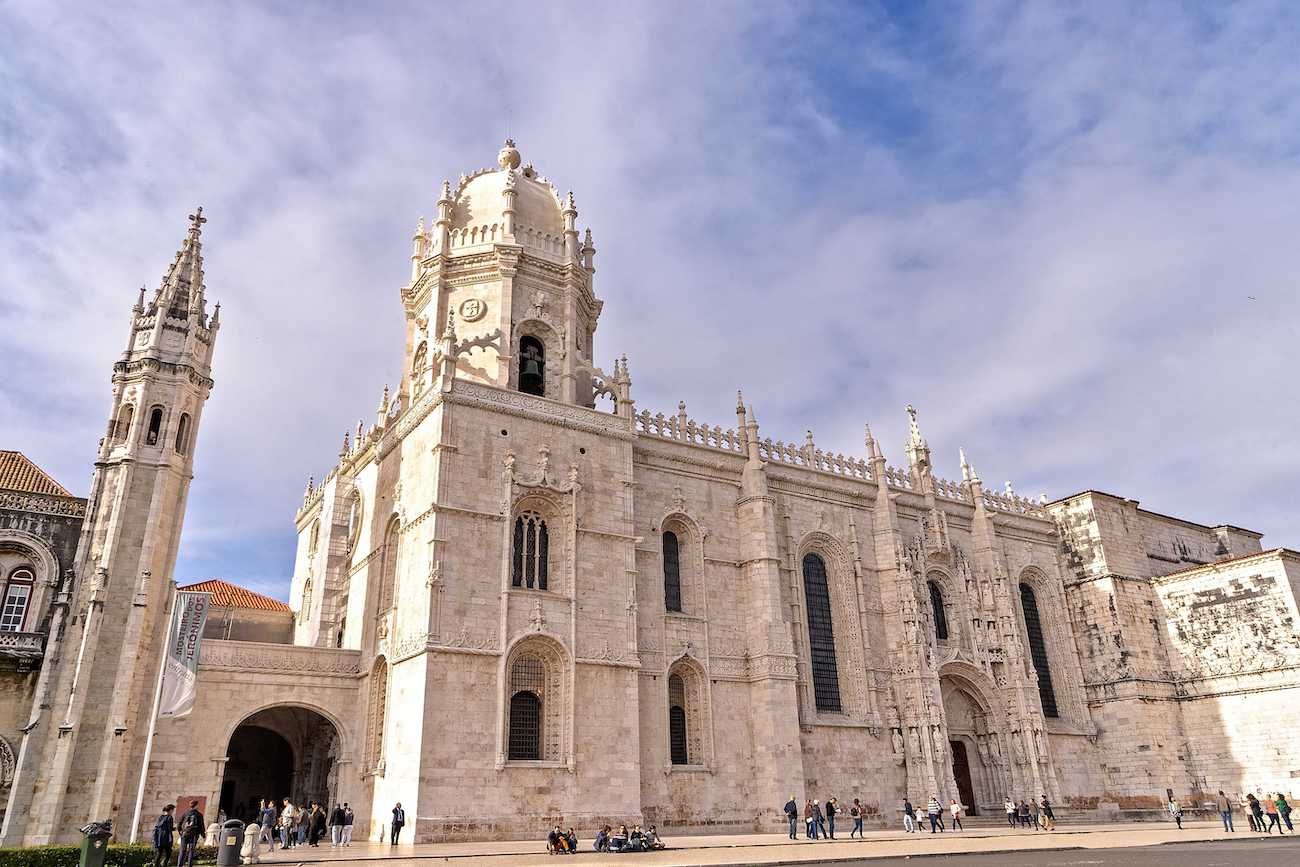
The Jeronimos Monastery is intimately related to Portuguese discoveries. The Monastery was built at the beginning of the 1500s to commemorate Vasco de Gama and his epic journey to India and as a homage to the Virgin Mary for protecting the journey. By the entrance, you can see Vasco de Gama’s tomb, and you’ll be enchanted by the elaborated late Gothic carvings of the cloisters.
Belem Tower
Dating back to 1515 and built as a fortress to protect the entrance of Lisbon’s harbor, the Belem Tower is one of the most iconic monuments of the capital and Portugal. Many discoveries expeditions started from the Belem Tower, which is listed as a UNESCO World Heritage Site, together with the Jeronimos Monastery.
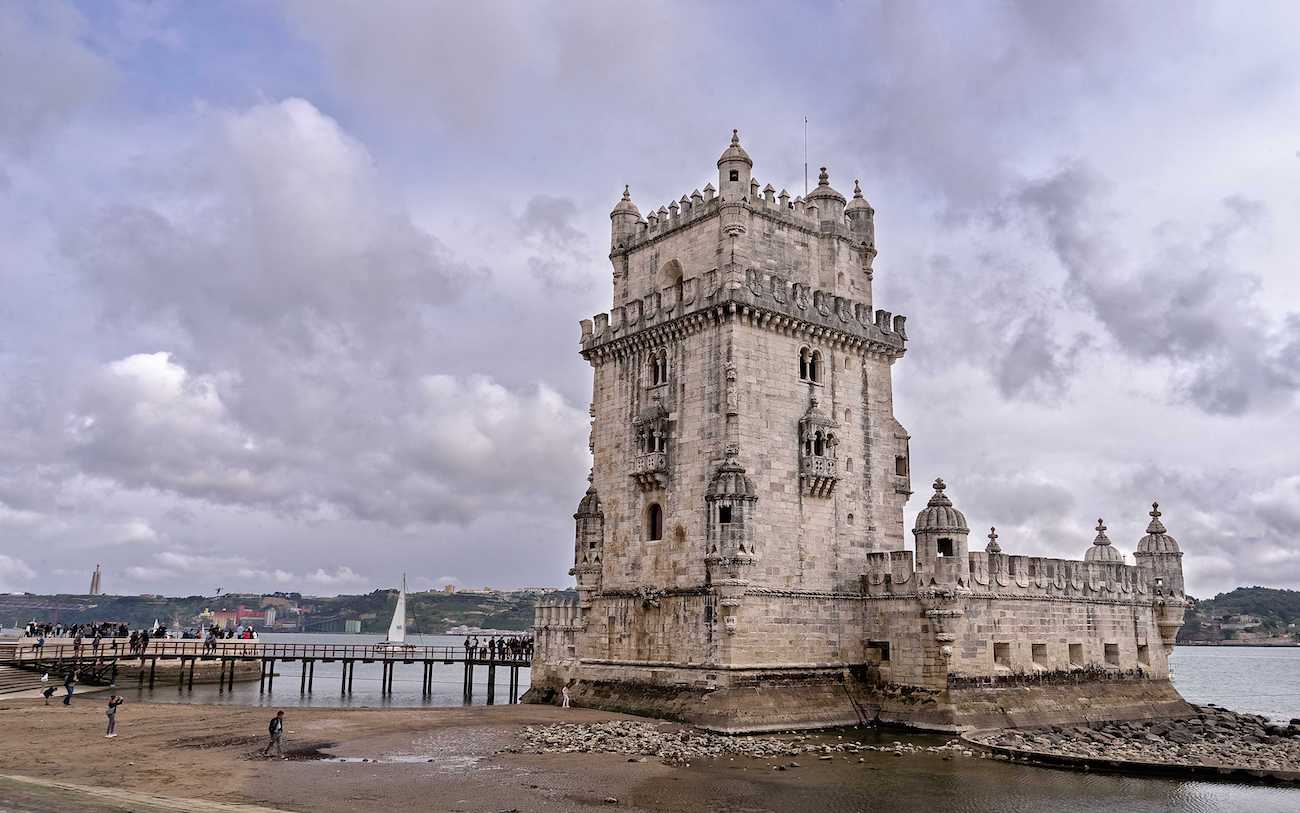
Like the Monastery, it is built in Manueline style and showcases multiple sculptures and decorations. These embellishments contrast with the massive and unadorned military architecture, which is mostly seen across Europe.
The setting of the Belem Tower, surrounded by water, is nothing short of picturesque. To be honest, while I certainly admired it, I was more impressed by the Jeronimos Monastery and the Monument to the Discoveries. But you’ll judge by yourself.
In any case, expect queues to visit the tower’s interior and look out from the balconies.
Monument to the Discoveries
Through the large, well-kept park located in front of the Jeronimos Monastery, you’ll get to the beautiful memorial dedicated to Portuguese explorers: the Monument to the Discoveries (known as Padrão dos Descobrimentos).

The Monument was built in 1960 to commemorate the 500th anniversary of Prince Henry the Navigator’s death. Designed as the bow of a ship ready to set sail, it displays sculptures of the most important Portuguese explorers and other historical figures. The stone tower overlooks a square with detailed mosaic motifs around a compass. To get the best view of the mosaic, you’ll have to climb to the top, from where you can enjoy splendid river views.
Museu Coleção Berardo
If you like modern and contemporary art, don’t miss visiting the Berardo Museum. The permanent collection includes works by Picasso, Joan Mirò, Salvador Dalì, and Andy Warhol, to mention only a few. With the Lisbon Card, you get a 30% discount on the entrance fee.
Lisbon at night
Dinner and Fado show
If you’re interested in the local culture, one of the things to do in Lisbon at night is to experience a fado show. Fado, which means “fate,” is the musical genre typical of Portugal which was recognized by UNESCO as an Intangible Cultural Heritage of Humanity in 2011.
Powerfully expressive and filled with melancholy, fado is perhaps the most tangible expression of the “Saudade,” the profound state of longing deeply rooted in the cultures of Portugal, Brazil, and Cape Verde.
The “Fado in Chiado” show is one of the most popular performances. Alternatively, you can also experience an evening Fado Show and dinner with a local guide.
Bairro Alto nightlife
One of the top things to do in Lisbon is to enjoy its fabulous nightlife. Barrio Alto is the liveliest neighborhood in central Lisbon, well known for its quirky bars, pubs, and various restaurants.
Bairro Alto nightlife sharply contrasts with the atmosphere you breathe in this bohemian district during the day. The quiet is replaced by vibrant life, and the almost deserted alleys become incredibly animated.
Unusual things to do in Lisbon
You can’t get wrong with a “classic” 2-day Lisbon itinerary. However, you may also want to experience something a little bit different. There are a few unusual things to do in Lisbon that are actually pretty cool.
The Atlantic Ocean and the river Tagus play an essential role in the city’s unique flair. Thus, how about a 2-hour sailboat cruise (with drinks!), along the river? You can do it at different times of the day: morning, sunset, and night, and whichever you choose, you’ll have a fantastic time and enjoy amazing views.
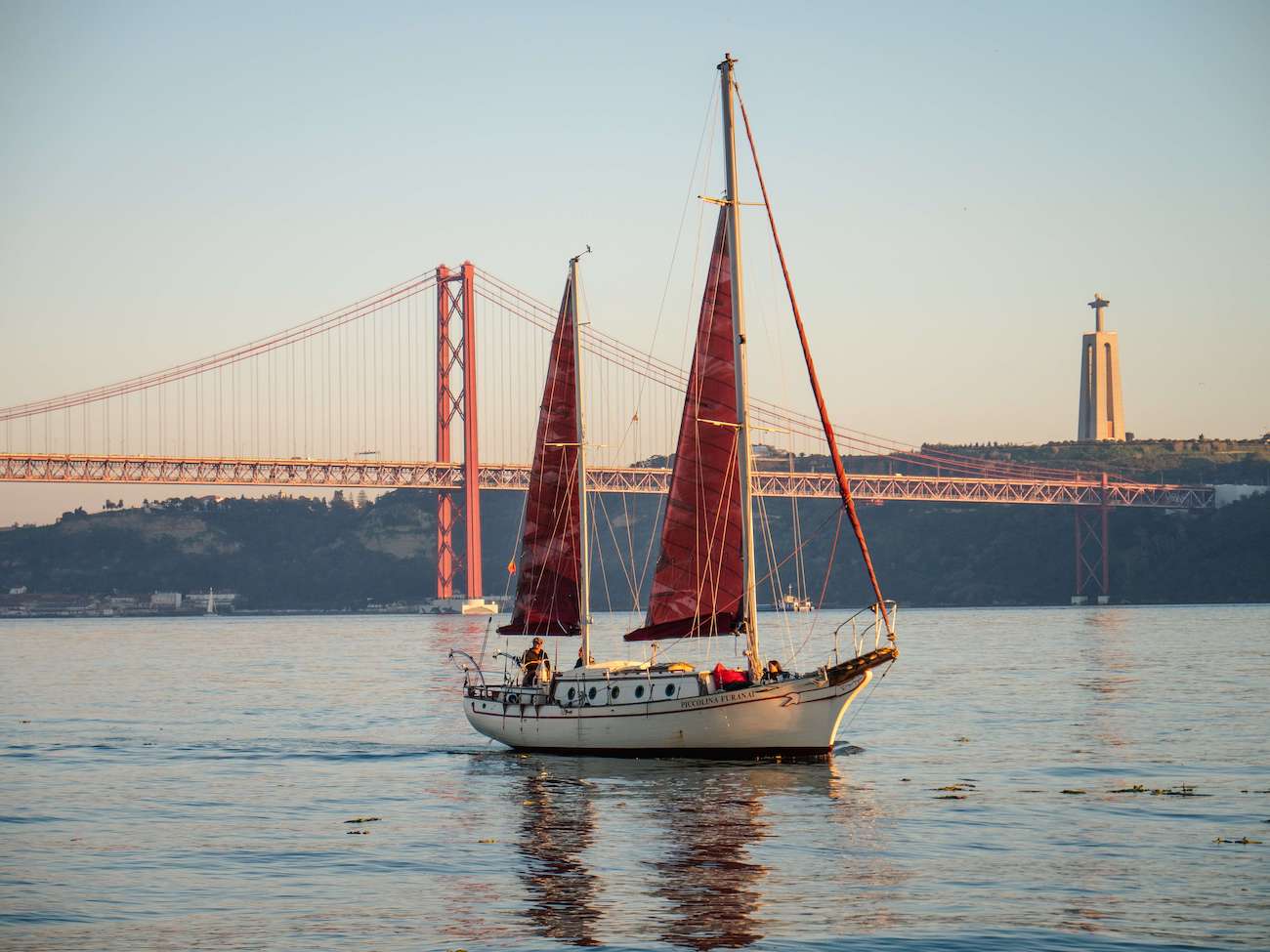
Local gastronomy is an integral part of a travel experience, and discovering it is always fascinating. Lisbon food (along with Portuguese culinary traditions) is delicious. So, why not treat yourself to a 3-hour Food and Wine walking tour to learn about the unique flavors, dishes, and products of Portugal?
Street art, murals, and public outdoor installations have become an increasingly popular attraction. To me, it’s a passion, and I chased street art in many cities: Bristol, Buenos Aires, Brighton, and many others. I was surprised by the sheer number of Lisbon murals, some truly amazing. There’s a very cool Lisbon street art tour where your guide is a street artist himself, who’ll walk you to the best murals, some in hidden alleys you wouldn’t find on your own.
What are the best things to do in Lisbon when it rains? Of course, I wish everyone plenty of sunshine. But depending on the season, there’s a chance of facing a rainy day in Lisbon. A fun activity is a short cooking class to learn how to prepare Pastel de Nata, the delicious egg tarts that are one of the most famous food specialties in Portugal.
*****
There’s so much to do and see that 2 days in Lisbon are not much, but this Lisbon itinerary will let you discover the city’s main sites.
Lisbon: Practical Information
Getting there
Lisbon airport has many international connections, especially with European countries and Latin America. Find the best airfares on Trip.com.
There are several options to reach the city from the airport, and which is the best choice depends on where you stay in Lisbon, your arrival time, and how much luggage you have. The city center is connected by bus and metro. However, the system to buy public transportation tickets is a bit confusing at first. Therefore, an excellent alternative option is to book a private transfer from Lisbon airport to your accommodation in the city center. It’s surprisingly cheap, and you’ll save a lot of time and hassle.
Getting around in Lisbon
There’s plenty of public transport in Lisbon, which is the best way to get around. However, you’ll also walk a lot, uphill and downhill. Therefore, I strongly recommend wearing comfortable shoes.
You can buy single tickets if you plan to use public transport only occasionally. Otherwise, it’s worth purchasing the Lisbon Card for unlimited access to public transportation and free entrance to several Lisbon attractions. You can choose between a 24, 48, or 72-pour pass.
Where to stay in Lisbon
Accommodations in Lisbon range from hostels to luxury hotels, and there’s something for any budget. As for the best areas to stay in Lisbon, it depends much on what kind of district and vibe you prefer. I chose to stay in Alfama and loved it. The only neighborhood I don’t recommend is Belem since it’s farther from central Lisbon, where you’ll find most attractions and nightlife. Staying in the historic center will also make things easier if you plan a day trip to Sintra or other nearby charming destinations.
The stylish Browns Central Hotel is located in the heart of Lisbon, close to the Alfama and Chiado districts. The hotel offers many amenities, including rooms with a water Kettle and a Nespresso coffee machine.
Lisboa Carmo Hotel is ideally located in Lisbon’s historic center and a stone’s throw from the Bairro Alto. The hotel features modern and classic rooms and a terrace and is within walking distance of many of the best Lisbon spots.
Hotel da Baixa has a modern décor and rooms with many amenities. Located in Lisbon’s old town, it’s ideally located to walk to many must-sees in Lisbon.
Travel Insurance
Unless you already have one, I suggest you buy travel insurance since, unfortunately, things can and do go wrong when you travel. There are many insurance companies to choose from. I’ve used World Nomads for years and was always happy with them. You can have a look by yourselves and get a quote.
Pin for later!
